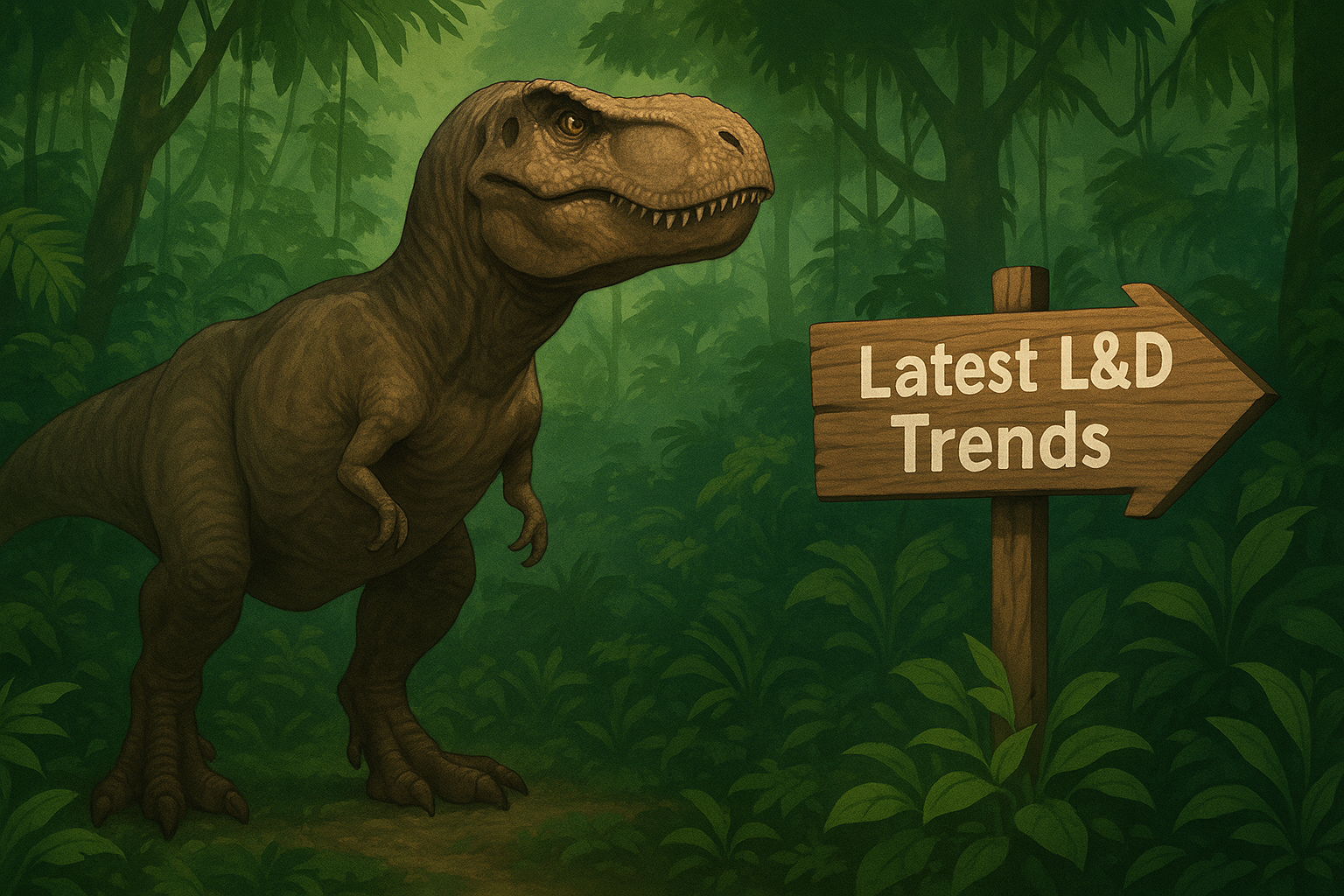Your scientists were so preoccupied with whether or not they could, they didn’t stop to think if they should.
That quote – courstesy of the character Dr Ian Malcolm in ‘Jurassic Park’ – feels like it was written for the world of Learning & Development. Replace “scientists” with “training teams” or “trainers” and it’s a warning: having the tools, the tech or the talent doesn’t automatically justify using them.

There’s nothing wrong with ambition. Innovation, keeping up with industry trends, exploring new formats – all good things. But too often, I’ve noticed that organisations fall into a pattern:
-
They see a glowing review of a new learning platform → they think “we need this too”.
-
Someone launches immersive virtual reality training modules → they scramble to build them, even though only a small part of their workforce would benefit.
-
They try to adopt AI-based personalised learning pathways because they sound cutting edge, without thinking whether their staff have the digital literacy, bandwidth or support to make them work.
The result can then be expensive programmes that are under-used, poorly embedded or misaligned with real business priorities. The cost is high – not just in money, but in trust, time and morale.
Before saying “yes” to every shiny new thing, L&D professionals and Training teams need to pause and reflect. Some of the questions I’ve found helpful to use are as follows:
-
What problem are we solving?
Is this innovation rooted in a real challenge our people are facing, or is it just something we feel that we ought to do because others are? -
Who actually benefits – and will they?
Sometimes technology or fancy design looks great, but if the learners don’t have the conditions to engage, it won’t land. -
What’s our capacity to embed and sustain?
Launching something new is hard, but embedding it – making sure people adopt it, managers support it, there’s feedback – is harder. Do we have the mindset, energy and resources for that? -
Could simplicity be more powerful?
Not every problem needs a VR simulation. Sometimes better facilitation, clearer design, stronger reinforcement or more human touch achieves more. -
How will we know if this made a difference?
It’s easy to track “did we put on the training?” or “how many attended?”. Much tougher (but much more meaningful) are measures of behaviour change, performance impact, learner confidence or organisational culture shifts.
This is where mindfulness (in a business sense) comes in – not as a buzzword, but as a practice of slowing down the decision-making process. I’ve seen such positive impact when we L&D professionals listen to:
-
what our clients or workforce are saying (and not saying)
-
what the data is telling us
-
the tension between what we can do and what we should do
Mindfulness helps avoid the inertia of “everyone else is doing it, so we should too”. It opens up the space to choose paths aligned with your organisation’s values, purpose and real needs – not just the loudest trend that’s doing the rounds of this year’s L&D conferences.
At Incendo, we believe that strong training isn’t about packing in the latest gimmicks – it’s about clarity, purpose and impact. That’s exactly what our Trainer Development Programme is built to support. Here’s how it links to this challenge:
-
Getting clear on purpose: The programme helps participants explore why training matters for their organisation: what real business outcomes, culture shifts or performance changes are needed.
-
Focusing on how people actually learn: Not just what’s technically possible – but what works in practice. We explore into adult learning science and how design, facilitator behaviours and the learning cycle come together to create lasting change.
-
Designing with impact in mind: Rather than training for training’s sake, the programme equips trainers with tools to design sessions that stick – where learners engage, behaviour shifts and results are measurable.
-
Embedding change, not just delivering content: There’s a strong emphasis on what happens after the training: how to embed new behaviours, manage stakeholder expectations and sustain momentum.
Yes – you can explore every shiny new tech, trend or training format. But unless you stop to ask whether you should, you risk investing in things that don’t help – or worse, that distract.
When organisations build the habit of mindful reflection, when training teams sharpen their ability to say “no” to noise and “yes” to what matters, they don’t just keep pace – they lead.
If you’re a trainer, facilitator or L&D leader and want to move from capability to clarity, the Incendo Trainer Development Programme might be just what you need.




